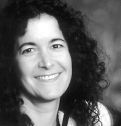|
Medicial Mistakes?
How many people each year suffer some type of preventable harm that contributes to their death after a hospital visit?
|
|
| | Naturopathic Medicine: Asthma | |
Sometimes diet alone is not enough to help an illness. Specific vitamin and mineral supplementation to consider
with asthma is as follows:
- Vitamin B12 1000 mg injected intramuscularly, daily for 7 days.
- Vitamin B6 50 mg twice daily
- EPA (found in fish oils) 3g daily
- flax oil 1-2 Tbsp. daily
- bioflavonoids, especially quercetin or hesperidin, 400 mg 15-30 minutes before meals
- Beta carotene 100,000 I.U. daily
- Selenium 250 - 400 mg daily
- Vitamin E 800 I.U. daily
- Vitamin C 1-2g daily
- Magnesium 400 mg daily
- digestive enzymes can help reduce mucus formation and prevent undigested food from "leaking" into
the blood stream, which would cause a systemic inflammatory reaction.
- N-acetyl cysteine (an amino acid that works well to digest mucus) 500 mg twice daily.
- pantothenic acid (vitamin B5) 500 mg morning or afternoon
What Herbal Medicine Therapies Are Helpful for Asthma?
A vast array of plant medicines can help to heal asthma. Be sure to consult with a qualified herbalist or naturopathic
physician to find the herbs that are local, readily available to you, or processed by a conscientious herbal supplier.
Your local herbalist will help you determine the best form and dose for the therapy. The following herbal medicines
are particularly useful for asthma.
- Ammi visnaga, an East Indian plant
- Brassica spp. (mustard): use in a warm chest compress or as a foot bath for asthma accompanying bronchitis or
as foot bath
- Commiphora myrrha: (Myrhh) works well for asthma with profuse secretion which is expelled with difficulty.
- Convallaria majalis (Lily of the Valley - beware this can be toxic in relatively low doses) is indicated for cardiac
asthma, and combines well with Leonurus cardiaca (Motherwort).
- Datura stramonium (Thorn apple, toxic!) for chronic asthma
- Ephedra vulgaris: (Ephedra, the herbal Pseudofed) relieves bronchial spasm. Combines well with Lobelia inflata
and Grindelia robusta
- Euphorbia hirta: works well for bronchitic asthma, especially combined with Grindelia robusta
- Grindelia robusta: is given for asthma with a dry cough, sense of soreness, rawness. May be best as fresh plant
preparation.
- Lobelia inflata (toxic) for spasmodic asthma with secondary bronchitis. Combines well with Capsicum
frutescens, (Cayenne pepper), Grindelia robusta, Drosera rotundifolia, Euphorbia hirta, Ephedra vulgaris
- Marrubium vulgare (White Horehound) for asthma with moist expectoration, loss of the voice and difficulty
breathing.
- Polygala senega (Milkwort) is for bronchitic asthma; combines well with Euphorbia hirta and Grindelia
robusta.
- Sanguinaria canadensis (Bloodroot, beware, it's toxic) reduces bronchial spasms and combines well with Lobelia
inflata.
- Selenicereus grandiflorus (toxic) for asthma with cardiac symptoms.
- Symplocarpus foetidus: (Skunk cabbage) is a traditional anti-asthma remedy because it reduces bronchial
spasms and relieves cough.
- Thymus vulgaris: (the culinary herb, Thyme) breaks up mucus secretions in the bronchi.
- Verbascum thapsus: (Mullein) is very soothing when inhaled from a steaming broth.
- Viburnum opulus: (Cramp bark) reduces spasms all over the body, including the lungs.
Some traditional asthma remedies using a combination of herbs include:
- for paroxysmal cough and dry mucous membrane use Eriodictyon californicum plus Grindelia robusta.
- for a severe attack, when you feel pressed for breath and are wheezing use Gelsemium sempervirens (Yellow jasmine, toxic) plus Ferula sumbul .
- Verbascum thapsus plus Grindelia robusta
Two more old-fashioned, highly effective herbal remedies worth mentioning are:
For an acute attack:
- Cramp bark 7.5 mL of tincture
- Ephedra 5 mL
- Skunk cabbage 5 mL
- Thorn apple 3-5 mL
- Lobelia 7.5 mL
- Cayenne pepper 5 mL
Mix these ingredients together and take 2-3 dropper fulls every 20-30 minutes until the attack subsides.
CONTINUED Previous 1 2 3 4 5 6 Next
 | A graduate of Bastyr University in Seattle, she completed both the Naturopathic and Acupuncture/Oriental Medicine programs. Her preceptor work (similar to residencies) took place in Seattle, West Virginia and China,......more |
|
|
Popular Related Articles/Areas
Popular & Related Products
Popular & Featured Events
Dimensions of Wellness
|
|
|